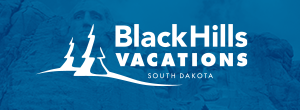History of the Black Hills
The Black Hills is a mountain range in western South Dakota that extends into Wyoming. The highest point is Black Elk Peak, which rises to 7,242 feet above the surrounding plains. Covered in evergreen trees, the Black Hills are called so because of their dark appearance from a distance. Native Americans have a long history in the Black Hills and consider it a sacred site. Inhabited by Western Sioux, Cheyenne, Kiowa, Arapaho and Crow – the area was a hunting ground and sacred territory. The name of the hills in Lakota is Paha Sapa. The US Government signed the Fort Laramie Treaty of 1868, establishing the Great Sioux Reservation west of the Missouri River.
The Gold Rush started here in the Black Hills as a result of George Armstrong Custer’s Black Hills Expedition in 1874. Gold was discovered and gold hunters and miners swept into the area the following year. This population influx led to the Black Hills War in 1876 and the Battle of Little Bighorn. Despite the Native American victory the US government relocated the Lakota to five smaller reservations in western South Dakota.
Approximately 10,000 people populated the Black Hills by 1876. Mining camps were established near Custer, Hill City and Deadwood. By 1877 the Homestake Mine had become the largest gold mine in the United States. Deadwood became known for its infamous characters like Wild Bill Hickok & Calamity Jane, as well as Seth Bullock.
Over the years the economy has shifted from being natural resource based (mining and timber) to hospitality and tourism with National & State Parks, Museums and more.
Please visit some of our many museums to find out more about the history of this great area. This is only a brief overview of Black Hills History.
Museums Throughout the Black Hills
Discover the history of the Black Hills by touring one of the many museums that feature everything from B-1 Bombers and American frontier artifacts to dinosaur bones and rare rocks. Nearly every community in the Black Hills proudly boasts a museum or visitors center and the collections are as varied as the Black Hills landscape itself.
Celebrate the heritage of South Dakota’s rich Native American, Old West and mining history at the High Plains Western Heritage Center in Spearfish, the Adams Museum and Days of 76 Museum in Deadwood, the Tri-state Museum in Belle Fourche and the Black Hills Mining Museum in Lead. Geology, paleontology and archeology take center stage the Hot Springs Mammoth Site and at the Museum at Black Hills Institute in Hill City. Visit the Presidential Wax Museum, Independence Hall and the South Dakota Air & Space Museum to learn about early American and presidential history.
Let us help you personalize your experience by finding and booking the museums, monuments and attractions that your family desires.
